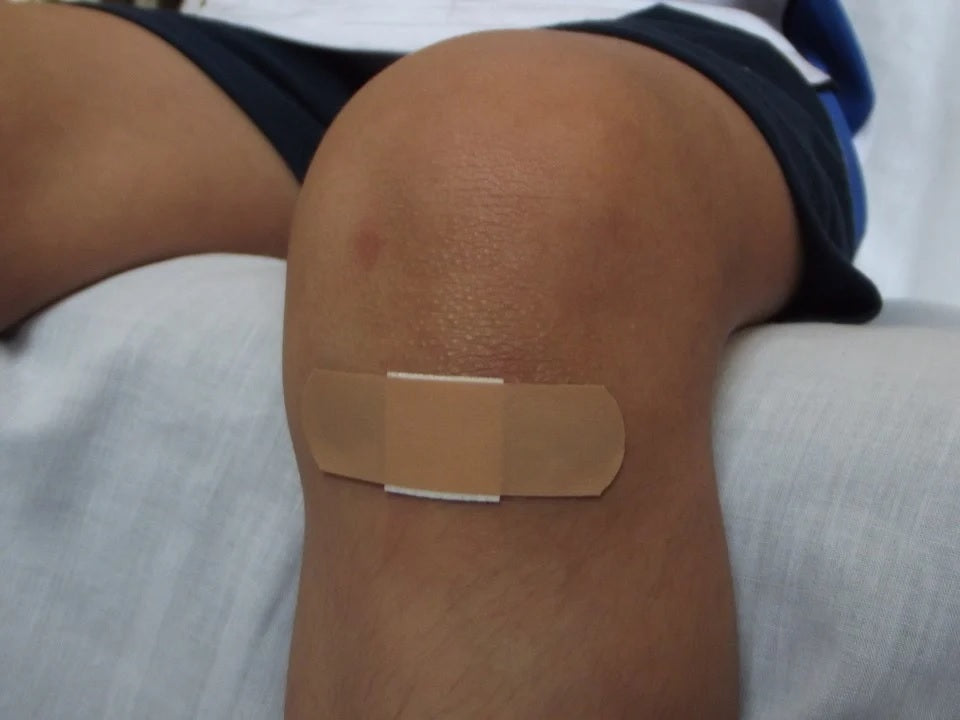According to the NHS, you should seek medical attention in the following instances;
- Animal / human bites – you may need preventative shots / medication
- Inflamed and has pus – you may need antibiotics and have it professionally drained
- Wounds near main arteries (neck, inner thigh etc) or joints (to check integrity of the joints)
- Has something embedded in it – anything large should be left, as removing it without medical supervision may cause uncontrollable bleeding
- When a wound is very large or deep
- When a wound will not stop bleeding
- Burn wounds
- that affect not only the skin layer but also the tissue beneath it / deeper into muscle / bone
- larger than 7 centimetres in diameter
- that covers the hands, feet, face, groin, buttocks or a major joint
- if clothing is burned into the skin
How to clean / dress wounds at home
- Stop bleeding (if the wound is fresh) by applying pressure with a clean towel or shirt. Should the wound be located on a limb, elevate it above heart level, if possible
- Wash and dry your hands properly – preferably with a fresh towel or paper towel
- If you are helping someone, have them sit down or lie down. If you are helping a stranger, you should wear latex gloves. Explain to them what you are doing to avoid any surprises and frights
- If a wound is fresh, rinse it under the tap for 5 to 10 minutes to flush out any possible debris, soil or dirt – if this is just a routine cleaning, after the fact, you can skip this step
- Soak a clean cloth or gauze with a saline solution, clean water, or an antiseptic liquid and dab the wound
- Do not use cotton as a loose strand may get left behind in the wound
- If the wound is still bleeding, try a styptic pencil or you may use some Lennon’s Staal Druppels to help stop the bleeding. This will burn, brace yourself!
- You can add a bit of antiseptic ointment to keep the skin hydrated and prevent infection
- Cover the wound with the appropriate dressing / plaster. If applicable, double up on dressing
- Clean and re-dress the wound twice a day

How to treat burn wounds
- In the event of a burn, assess the damage first. If the burn is second or third degree, or larger than 7 cm, seek medical attention immediately, do not attempt to do anything to the wound
- If the wound is first degree and smaller than 7 cm, soak it in cold water for 5 minutes to reduce swelling and heat
- Apply a generous amount of aloe vera or Burnshield Gel
- You can place a loose-fitting dry gauze bandage over the area
How you can aid your wound healing
- The body uses some nutrients to help regenerate your skin. Common nutrients include Vitamin C, Vitamin E, Zinc and Omega 3
- You can supplement your diet or make sure you eat a healthy, balanced diet. You should drink lots of water to flush any toxins out and to keep your skin hydrated
To remember
If at any point you feel overwhelmed or unsure, seek medical help – especially when children are concerned. Pain, especially in the event of a burn, can be constant and excruciating. If you are struggling with dressing wounds, please visit our Wellness Clinic and have one of our sisters demonstrate proper use and additional products that may be of use.
You can get your First Aid Kit as well as First Aid training at Mopani Pharmacy.
Read more: Bilharzia – The other type of worm
We can deliver your medication, supplements and other Mopani online shopping, nationwide! More info: mopani.co.za | crossing@mopani.co.za | Tel: 013 755 5500 | WhatsApp: 066-192-1703
References: NHS and Crozer Keystone Health System

